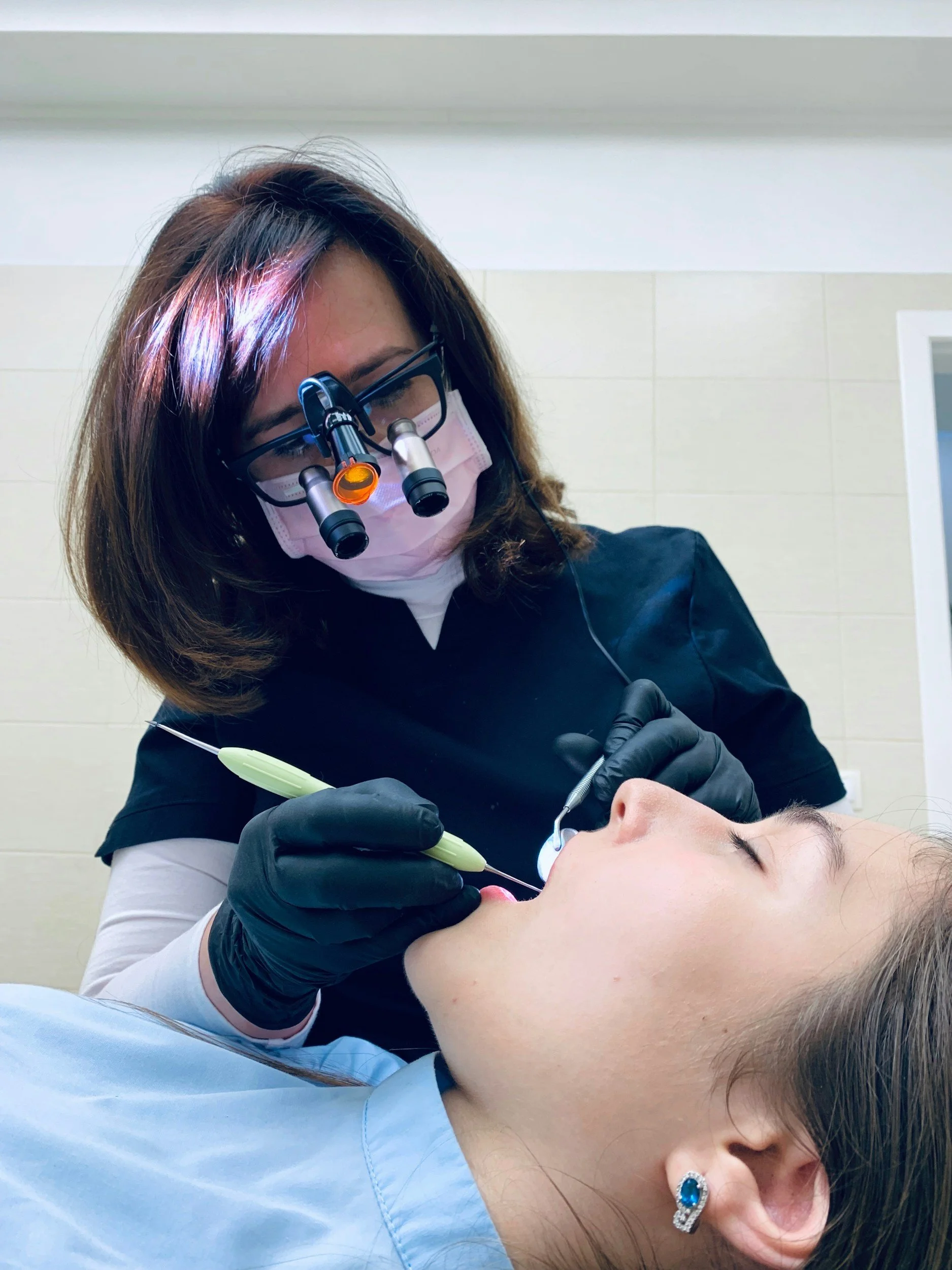Types of Cavity Fillings Used by Kids dentists
Why Cavity Fillings Are Necessary for Kids
Cavities are a common dental issue among children, often caused by improper oral hygiene, sugary diets, and the natural structure of baby teeth, which are more prone to decay. If left untreated, cavities can lead to pain, infections, and difficulties with eating or speaking. Kids’ dentists play a crucial role in treating cavities early to maintain a child's oral health.
How Cavities Develop and Why They Must Be Treated
Cavities form when bacteria in the mouth feed on sugars and produce acid, which gradually erodes the tooth enamel. Over time, this erosion creates holes or cavities in the teeth. Baby teeth, or primary teeth, have thinner enamel than adult teeth, making them more susceptible to decay.
Ignoring cavities in baby teeth can lead to:
Pain and discomfort
Infections that can spread to other parts of the mouth or body
Premature loss of baby teeth, which can affect speech and alignment of permanent teeth
The need for more extensive dental treatments
Filling cavities early prevents these complications and helps maintain a child's oral health.
The Role of Fillings in Preventing Further Decay and Preserving Baby Teeth
Cavity fillings restore the structure of a damaged tooth, preventing further decay. Although baby teeth eventually fall out, they play an essential role in:
Maintaining proper spacing for permanent teeth
Supporting speech development
Allowing children to chew properly and maintain a healthy diet
By treating cavities early with fillings, Kids dentists ensure that baby teeth remain functional until they naturally fall out.
How Modern Pediatric Dentistry Focuses on Pain-Free, Stress-Free Treatments
Modern pediatric dentistry prioritizes a child-friendly approach to make dental visits stress-free. Many advancements help ensure a painless experience, such as:
Topical Anesthetics and Nitrous Oxide: Used to minimize discomfort during procedures.
Laser Dentistry: Reduces the need for drills and provides a quieter, more comfortable experience.
Kid-Friendly Atmosphere: Pediatric dental offices often include fun decorations, entertainment, and friendly staff to help children feel at ease.
Types of Cavity Fillings Used by Kids dentists
Kids’ dentists use a variety of filling materials, each with its own advantages. The choice of filling depends on factors such as the location of the cavity, the child’s age, and aesthetic preferences. Below are the most common types of cavity fillings used in pediatric dentistry.
1. Composite Resin Fillings (Tooth-Colored Fillings)
Pros:
✔️ Natural-looking, blends with the child’s teeth
✔️ Strong and durable for small to medium-sized cavities
✔️ Bonds well to the tooth, preserving more of its natural structure
Cons:
❌ More expensive than silver (amalgam) fillings
❌ Can wear down faster than metal fillings in high-pressure chewing areas
Best for: Front teeth and visible areas where aesthetics matter.
Composite resin fillings are a popular choice for kids because they match the natural color of teeth. These fillings are made from a mixture of plastic and glass, providing both durability and aesthetic appeal. Since they bond directly to the tooth, less drilling is required, making the procedure less invasive.
2. Amalgam Fillings (Silver Fillings)
Pros:
✔️ Highly durable and resistant to wear
✔️ More affordable than composite fillings
✔️ Can withstand heavy chewing forces
Cons:
❌ Silver color makes them noticeable, which may be unappealing
❌ Requires more removal of healthy tooth structure to place the filling
Best for: Molars and back teeth where durability is more important than aesthetics.
Amalgam fillings have been used in dentistry for over a century due to their strength and longevity. Though their metallic appearance makes them less popular for front teeth, they remain a reliable choice for cavities in back teeth where chewing pressure is highest.
3. Glass Ionomer Fillings
Pros:
✔️ Releases fluoride, which helps prevent further decay
✔️ Blends well with natural teeth
✔️ Works well for children with high cavity risk
Cons:
❌ Not as strong as composite or amalgam fillings
❌ More prone to wear and chipping
Best for: Small cavities in baby teeth and areas with minimal chewing pressure.
Glass ionomer fillings are a unique type of material that releases fluoride over time, helping to protect surrounding teeth from further decay. These fillings are often used for very young children or in cases where a temporary solution is needed before the baby teeth naturally fall out.
4. Ceramic (Porcelain) Fillings
Pros:
✔️ Highly aesthetic, mimics natural tooth color
✔️ More resistant to staining than composite resin
✔️ Durable and long-lasting
Cons:
❌ More expensive than other filling types
❌ Requires more than one dental visit in some cases
Best for: Older children or permanent teeth where aesthetics are a priority.
Ceramic fillings are ideal for parents looking for a durable yet natural-looking option. While they are not as common in pediatric dentistry due to their cost, they offer excellent longevity and stain resistance.
5. Stainless Steel Crowns (For Severe Decay)
Pros:
✔️ Provides full coverage and protection for a severely decayed tooth
✔️ Long-lasting and highly durable
✔️ Cost-effective solution for baby teeth
Cons:
❌ More noticeable than traditional fillings
❌ Requires more space and preparation to fit the crown
Best for: Large cavities, severely weakened teeth, or children with high cavity risk.
If a tooth is too damaged for a regular filling, a stainless steel crown may be placed to protect it. These crowns are particularly useful for baby molars, ensuring that the tooth remains functional until it naturally falls out.
How Kids dentists Choose the Right Filling for Your Child
Kid’s dentists carefully evaluate several factors before deciding on the best type of filling for a child’s cavity. The choice depends on the specific needs of the child and the characteristics of the cavity.
1. Factors Considered
Location of the Cavity: Front teeth may require aesthetic, tooth-colored fillings, while molars may need stronger, more durable materials.
Child’s Age: Younger children may need fillings that require less treatment time, while older kids can tolerate more complex procedures.
Bite Force: Teeth that experience high pressure from chewing (molars) need stronger fillings like amalgam or stainless steel crowns.
2. Importance of Durability vs. Aesthetics
Durability: Fillings on back teeth must withstand constant chewing, making materials like amalgam or stainless steel crowns a common choice.
Aesthetics: Front teeth or visible areas often require composite resin or ceramic fillings for a natural appearance.
Longevity: Some fillings last longer than others, so Kids dentists consider how long the baby tooth will remain before it naturally falls out.
3. How a Kids Dentist Prioritizes Comfort and Long-Term Dental Health
Minimally Invasive Procedures: Kids dentists use the least invasive methods to reduce discomfort and preserve as much of the natural tooth as possible.
Pain-Free Treatments: Options like local anesthesia, nitrous oxide (laughing gas), or laser dentistry make the procedure stress-free for kids.
Preventive Approach: Fillings not only repair cavities but also help maintain baby teeth, ensuring proper alignment for future permanent teeth.
By considering these factors, a kids dentist ensures that each child receives the most appropriate and comfortable treatment for their long-term oral health. Regular checkups and preventive care can further reduce the need for fillings in the future!



